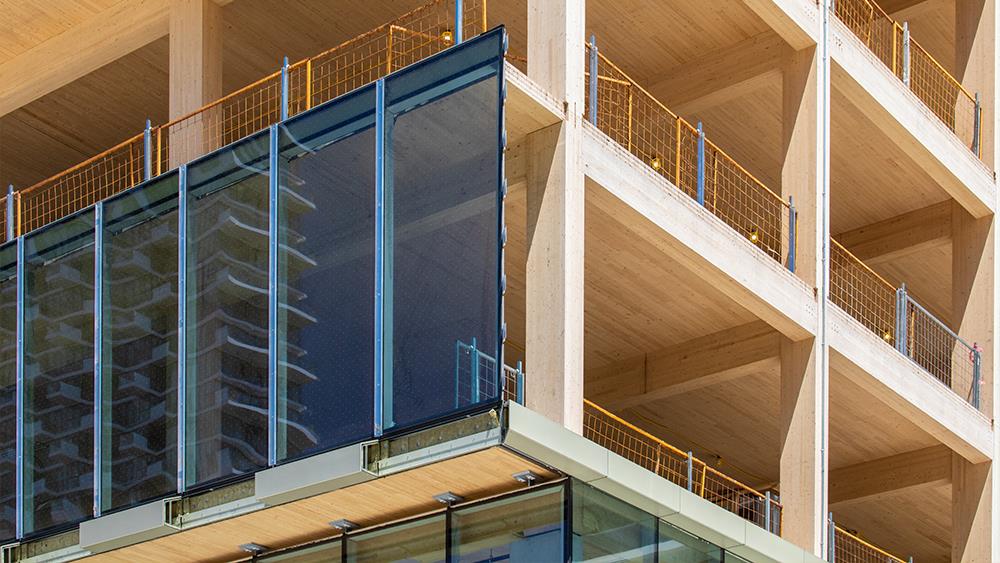

Timbersource highlights the importance of timber durability and explains what merchants need to know about it.
One of the most important things to consider when embarking on a project is knowing which materials are the most durable for the conditions the project will face.
In the world of timber, different weather conditions will have different impacts on the lifespan of both hard and soft woods, due to the harsh conditions faced outdoors.
Timbersource have put together data around the durability classes of timber and their respective lifespans and what this means for those in the builders' merchants industry.
The durability scale
The durability class for different species of timber is really useful as an overview for people to find out the durability for materials, and how long they will last for.
In the case for timber, the classes are split up between 1 to 5, with durability class 1 being the most durable, with a 25+ years lifespan. Durability class 5 on the other hand is the least durable with 0-5 year lifespan.

It’s important to remember that the lifespan of timbers can greatly change based on their environment. Most timber used for indoor purposes is durable provided it's in a dry area, therefore choosing durable timber that is only suitable for interior projects will not work well for outdoor projects.
For example, beech is a very durable timber that indoors will last decades but outdoors, it will start to rot in six months.
When it comes to builders' merchants, explaining this information to customers before they buy is important. Informing them on the durability of the wood leads to a more informed purchase, that will lead to a loyal customer, as well as the material being suited to the project environment for the maximum amount of years.
The use of a durability scale can also assist traders on the stock of woods they want to sell, based on their target audience and store location. For example, if a store finds they sell wood for projects that are in a consistent wet windy environment, then they are more likely to store durability class 1 timbers that are likely to withstand these types of weather conditions.
Similarly, if you are buying timber for a project on behalf of a client, having an understanding of the durability scale can help you make an informed decision based on the project and outdoor conditions it will be exposed to.
What timbers are best suited for outdoor projects?
There are a few options to choose from when it comes to timbers for outdoor projects. To be suitable for external purposes, it’s vital that wood can be resistant to outdoor threats such as moisture, UV, and decay-causing fungi.
Some examples include:
Hardwood:
Softwood
As it can be seen, there is a wide range of timber that can be used for different outdoor environments, based on personal needs.
How do different outdoor environments affect timber?
Climates that have a lot of change in temperature ranging from warm, dry summers to cold, wet winters provide a tough environment for timbers. For example the UK has a lot of damp months through the year which is the perfect conditions for fungi. This is vital to consider if you are a trader because your target market may be living in a specific type of weather, where woods may not survive as long in certain environments.
It's the wide ranging species of fungi flourishing in these ideal weather conditions that break down the timbers and cause them to rot. The above species earn themselves a durability rating based on their resilience to this type of fungi attack with their natural oils or resin content.
It's important to note that milder or drier climates may allow other timbers to last longer outdoors due to the arid temperatures being the wrong conditions for fungi to thrive.
This info can also help to improve your timber life overall by aiming to build in drier areas, perhaps not under trees or cladding north elevations.
Choosing the right timber can have other benefits
Informing customers about the most durable timber for outdoor conditions can have a financial benefit for both the consumer, as well as the planet. If the timber is the most appropriate durability for the outdoor conditions it’s exposed to, then it will live up to its maximum lifespan, reducing the need for the customer to purchase again.
Consumers happy with their timber will lead to reduced waste. Customers are less likely to return to the trader with concerns the wood hasn’t lived up to its expectation, which can lead to the material going to waste.
Timber is great for climate change
As well as the comment mentioned above, the use of timber is also great for climate change. Using timber can dramatically reduce the carbon footprint of a new build, and could be a selling point for merchants.
The characteristics of timber is that it is the most environmentally friendly because it has the lowest energy consumption and the lowest carbon dioxide emissions. Timber preserves the carbon that it stores in the wood, which helps to prevent its release as carbon dioxide. This makes it a great option for the environment for many years to come.
As shown, a proper understanding of different timber species and their respective durability ratings will help you convey the right information to customers and increase the chances of repeat business, for more information on timber and its applicability for different projects reach out to Timbersource.